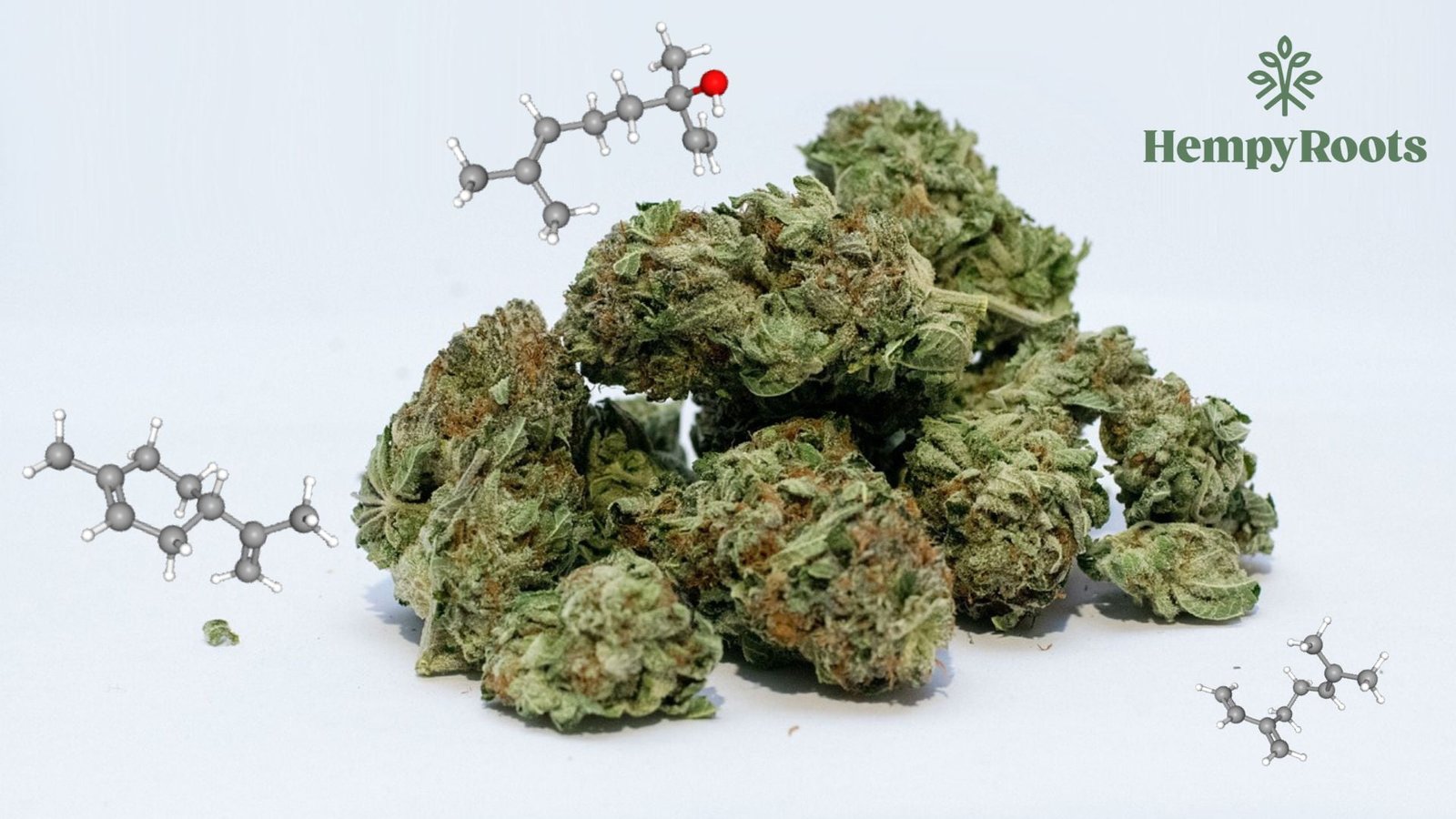Terpenes are aromatic compounds found in many plants, including the cannabis plant. These compounds are responsible for the distinct aromas and flavors of the different strains of cannabis and play a crucial role in the interaction with other compounds in the plant, such as cannabinoids. Today we’re going to explore the function of terpenes in the plant, the main types of terpenes found in cannabis, the concept of the entourage effect and the practical applications of terpenes.
Index
Function of terpenes in plants
Terpenes have several important functions in the cannabis plant. Firstly, they act as a form of defense against predators and pathogens, attracting pollinators and repelling insects and herbivores. In addition, terpenes contribute significantly to the aroma and flavor of different cannabis strains, making each strain unique. For example, a strain high in limonene may have a citrus aroma, while a strain rich in myrcene may have a more earthy, musky aroma.
Main terpenes found in the cannabis plant
There are more than 200 different terpenes in our favorite plant and some of the most common are:
Mirceno
Aroma: Earthy, musky, with hints of clove.
Benefits: May have sedative and relaxing properties.
Limonene
Aroma: Citrus, lemon-like.
Benefits: Potentially improves mood and relieves stress.
Linalool
Aroma: Floral, similar to lavender.
Benefits: Known for its anxiolytic and relaxing properties.
Pineno
Aroma: Pine.
Benefits: May improve memory and increase alertness.
Caryophyllene
Aroma: Spicy, peppery, similar to black pepper.
Benefits: It has anti-inflammatory properties and can act as a cannabinoid due to its interaction with CB2 receptors.
Terpinolene
Aroma: Floral, herbaceous.
Benefits: May have antioxidant and sedative properties.
Terpenes and the entourage effect
The entourage effect refers to the synergy between terpenes and cannabinoids in the cannabis plant, where the combination of these compounds can enhance their therapeutic effects. Studies suggest that terpenes can influence the way cannabinoids interact with our endocannabinoid system, improving the effectiveness of cannabis-based treatments. For example, myrcene can increase cell permeability, allowing other cannabinoids to be absorbed more easily.
Practical applications of terpenes
Terpenes have many practical applications in medicine and alternative therapies. For example, terpenes are often used in aromatherapy because of their therapeutic properties. Cannabis products with specific terpene profiles are chosen to treat certain conditions, such as anxiety, pain or insomnia.
Also, when choosing cannabis products, it’s important to consider the terpene profile, not just the THC or CBD content. Products with a balanced terpene profile can provide a more pleasant and effective experience, depending on the user’s needs.
Final considerations
Terpenes are an essential part of the chemical composition of the cannabis plant, contributing to its aromas, flavors and therapeutic effects. Understanding the function of terpenes and the concept of the entourage effect can help users make more informed choices about cannabis products. By exploring the different applications of terpenes, both in medicine and in everyday life, we can better appreciate the complexity and benefits of this incredible plant.
References
Russo, E. B. (2011). Taming THC: potential cannabis synergy and phytocannabinoid-terpenoid entourage effects. British Journal of Pharmacology, 163(7), 1344-1364.
Booth, J. K., & Bohlmann, J. (2019). Terpenes in Cannabis sativa – From plant genome to humans. Plant Science, 284, 67-72.
McPartland, J. M., & Russo, E. B. (2001). Cannabis and Cannabis Extracts: Greater Than the Sum of Their Parts? Journal of Cannabis Therapeutics, 1(3-4), 103-132.
Lima, N. G. P. C., et al. (2013). Limonene: aroma of innovation in health and disease. Chemistry Central Journal, 7, 36.
Noma, Y., Asakawa, Y., & Nakanishi, T. (1992). Terpenoids with potent antioxidant activity. Chemistry & Biodiversity, 39(4), 237-245.
Small, E., & Beckstead, H. D. (1973). Common cannabinoid phenotypes in 350 stocks of Cannabis. Lloydia, 36(2), 144-165.

